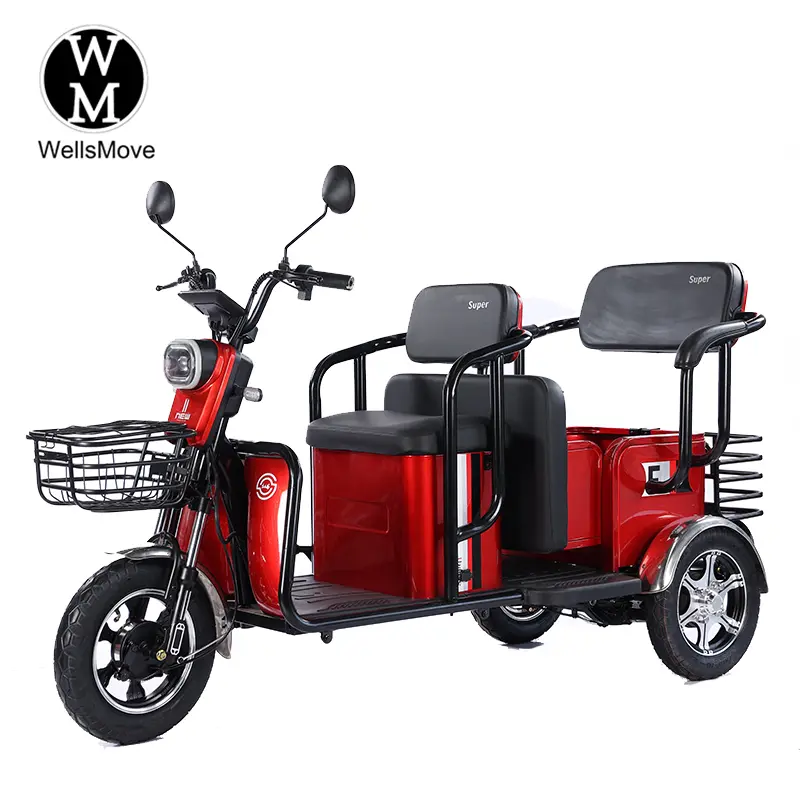Key Considerations for Choosing Seat Comfort for Seniors
For buyers, a product’s core competitiveness lies not only in battery life and safety, but also in seat comfort, a crucial factor influencing end-user repurchase rates and regional market acceptance. According to a survey by the European and American Senior Mobility Equipment Association, 68% of end-users ranked “seat experience” as their primary consideration in their purchase decisions. Products that fail to meet comfort standards have an after-sales complaint rate over three times the industry average. This article, from a procurement and adaptation perspective, will analyze the core factors influencing seat comfort, regional market adaptation strategies, and key compliance points. This will help buyers accurately select high-quality products that meet the needs of diverse global markets and enhance supply chain competitiveness.
I. Core Factors Influencing Seat Comfort: Professional Considerations from Materials to Structure
The essence of seat comfort lies in the compatibility of material properties with ergonomic design. Buyers should establish evaluation criteria based on the following dimensions, avoiding relying solely on subjective experience:
1. Material Selection: Considering Both Support and Skin-Friendliness
Material is the foundation of comfort. Regional market requirements vary significantly, so selection should be based on the target market’s climate and user habits.
Sponge Layer: A Balance of Density and Resilience
High-quality seats utilize a “double-layer composite sponge structure”: a 25-30D high-rebound sponge (soft to the touch, with an instant rebound rate of ≥80%) on the top layer and a 40-45D high-density sponge on the bottom layer (providing long-lasting support and retaining its shape after prolonged sitting). For cold regions like Northern Europe and Canada, it’s recommended to choose sponge with a graphene thermal conductive layer to prevent cold winter seats. For hotter regions like Southeast Asia and the Middle East, ensure the sponge has been treated with an anti-sweat treatment and a compression set of ≤5% (in compliance with ISO 3385).
Fabric: Dual requirements for abrasion resistance and breathability
Wholesale purchases should prioritize fabrics that have passed the Martindale abrasion test (≥5000 cycles) to prevent pilling and breakage after long-term use by the end user. The fabric should also be tailored to the regional climate: The European and American markets prefer polyester and wool blends (for warmth and anti-static properties), while the Australian and South American markets prefer mesh fabrics with UV protection (UPF ≥50+). A recommended air pore density of ≥30 per square centimeter ensures ventilation and a cool, comfortable ride in summer.
Auxiliary Materials: Details enhance the user experience
Add 1-2cm thick silicone anti-slip strips to the seat edges to prevent slipping when the user stands up. A 3D honeycomb breathable cushioning layer can be added to the buttocks to reduce the risk of pressure sores after prolonged sitting (especially for users with limited mobility and who need to sit for long periods of time).
2. Ergonomic Design: Adaptable to Users of Different Body Types Worldwide
Users in different countries have significant body types, so it’s important to avoid a “one-size-fits-all” approach when purchasing. Seat specifications should be adjusted based on the target market:
Basic Dimensions: Precisely Matching Body Types
For the European and American markets (average user height 170-180cm, weight 70-85kg), the recommended seat width is 50-55cm and the recommended seat depth is 45-50cm (ensure there is a 2-3cm gap between the back of the knee and the edge of the seat when the legs are naturally lowered). For markets in Asia and Africa (average height 155-165cm, weight 55-70kg), the seat width can be adjusted to 45-50cm and the depth to 40-45cm to avoid excessive seat size that could cause the body to hang loose or provide insufficient support.
Backrest and Lumbar Pillow: Conform to the Spine Curve
The backrest angle must be adjustable from 105° to 135° (to accommodate both upright driving and reclining rest). A 3-5cm raised lumbar pillow (the curvature conforms to the human S-shaped spine) should be provided at the lumbar region to relieve pressure. A removable and washable lumbar pillow is recommended for easy cleaning. Lumbar pillow accessories in varying thicknesses (2cm, 3cm, and 4cm) are also available to meet individual needs.
Armrest Design: Optimizing Support and Convenience
Armrest height must be adjustable from 7-10cm (to accommodate the natural armrest height of users of different heights). The front end of the armrest should be tilted outward 15°-20° to provide support when getting in and out of the vehicle. Some high-end markets (such as Western Europe and Japan) may offer heated armrests for a better winter experience.
II. Procurement Adaptation Strategy: Integrating Market Demand and Cost Control
Buyers need to strike a balance between comfort, procurement costs, and market demand to develop differentiated product selection strategies:
1. Customizing Parameters by Regional Market
For cold regions (Nordic, Russian, and Canadian): Prioritize seats with heating (heating temperature range: 25-40°C, adjustable in three levels). Use windproof and waterproof Oxford cloth with a fleece lining to prevent snow and rain from seeping into the seat interior. Insulation should also be added to the seat bottom to prevent the sponge from hardening due to low temperatures.
For hot and humid regions (Southeast Asia, India, and Brazil): Focus on breathability and waterproofness. Choose mesh fabric with a TPU waterproof coating (compliant with AATCC 127 waterproofing standards). The sponge should be treated with mildew-proofing (mildew resistance level ≥ 0, in compliance with GB/T 24346) to prevent bacterial growth and odor in humid environments. Multi-Scenario Market (US, Australia): Users who frequently use mobility scooters to go to supermarkets, parks, and other places require a seat that rotates 360° (torque ≤ 50N, for easy ingress and egress) and a load capacity ≥ 150kg to accommodate users of varying weights.
2. Segmenting Demand by Customer Group
For home care facilities: The seat must have a lift function (10-15cm) to facilitate transfers for caregivers with limited mobility. The seat fabric must also be disinfection-resistant (resistant to 84 disinfectant and alcohol wipes without fading or hardening).
For the retail market: Two options are available: a “basic” model and an “upgraded” model. The basic model meets core comfort needs (composite sponge + wear-resistant fabric) to control procurement costs. The upgraded model adds features such as heating, rotation, and lumbar adjustment, targeting mid- to high-end users and increasing profit margins.
3. Balancing Cost and Performance
Material Alternatives: If procurement budgets are limited, a composite structure of “memory foam + regular foam” (instead of pure memory foam) can be used. This retains the slow rebound properties while reducing material costs by approximately 30%. Polyester fabric can be used (instead of wool blends), offering consistent wear resistance at a lower price.
Benefits of Bulk Customization: When working with a factory, you can request customized seat specifications (e.g., printing your own brand logo or adjusting fabric color) in batches of 1,000 units. The factory typically offers a 5%-8% bulk discount while ensuring product consistency.
III. Compliance and Certification: Mitigating International Market Access Risks
Major global markets have clear compliance requirements for mobility scooter seats. When purchasing, confirm that the product has passed the following certifications to avoid customs clearance delays or penalties at the end-user:
EU market: Seats must comply with the EN 12184 standard (Safety Requirements for Elderly Mobility Devices). The impact test requires that the seat withstand a 100kg drop from a height of 30cm, with no cracking or significant deformation of the foam. They must also pass REACH certification (which restricts 197 hazardous chemicals) to ensure that the fabric and foam are free of harmful substances such as formaldehyde and heavy metals.
US market: FDA medical device certification is required (mobility scooters are Class I medical devices), and the seat’s flame retardancy must comply with 16 CFR 1633 (open flame burning time ≤ 10 seconds, smoldering time ≤ 30 seconds). In California, seats must also meet CA 65 standards, which prohibit carcinogens such as phthalates from seat materials. For the Asian market: Japan must comply with the JIS T 9201 standard, with a formaldehyde content of ≤75mg/kg for seat fabrics. For the Chinese market, the GB/T 35652-2023 standard must be met, requiring the seat to withstand a static load of 200kg for 24 hours without deformation of the seat frame.
IV. Market Validation: Improving the Accuracy of Procurement Decisions
To ensure that purchased seats meet end-market requirements, we recommend the following verification methods before placing bulk orders:
Sample Trial: Request 3-5 seat samples with varying specifications from the factory and send them to partner distributors or end users in the target market. Collect feedback on comfort ratings (1-10) and user pain points (e.g., “insufficient lumbar support” and “stuffy fabric”) to optimize procurement parameters. Comparison with competitors: Research the seat configurations of mainstream brands in the target market (e.g., materials and features of Pride Mobility in the US and TGA in Germany) to ensure the comfort of the purchased product is comparable to that of the competition while offering a competitive price (e.g., 10%-15% lower price for the same configuration).
Long-term durability testing: Subject samples to simulated use testing (e.g., 10,000 lifts/rotations, 500 hours of continuous seating), inspecting fabric wear and sponge resilience to ensure a product lifespan of 3 years or longer (meeting end-user durability expectations).
Post time: Oct-22-2025



